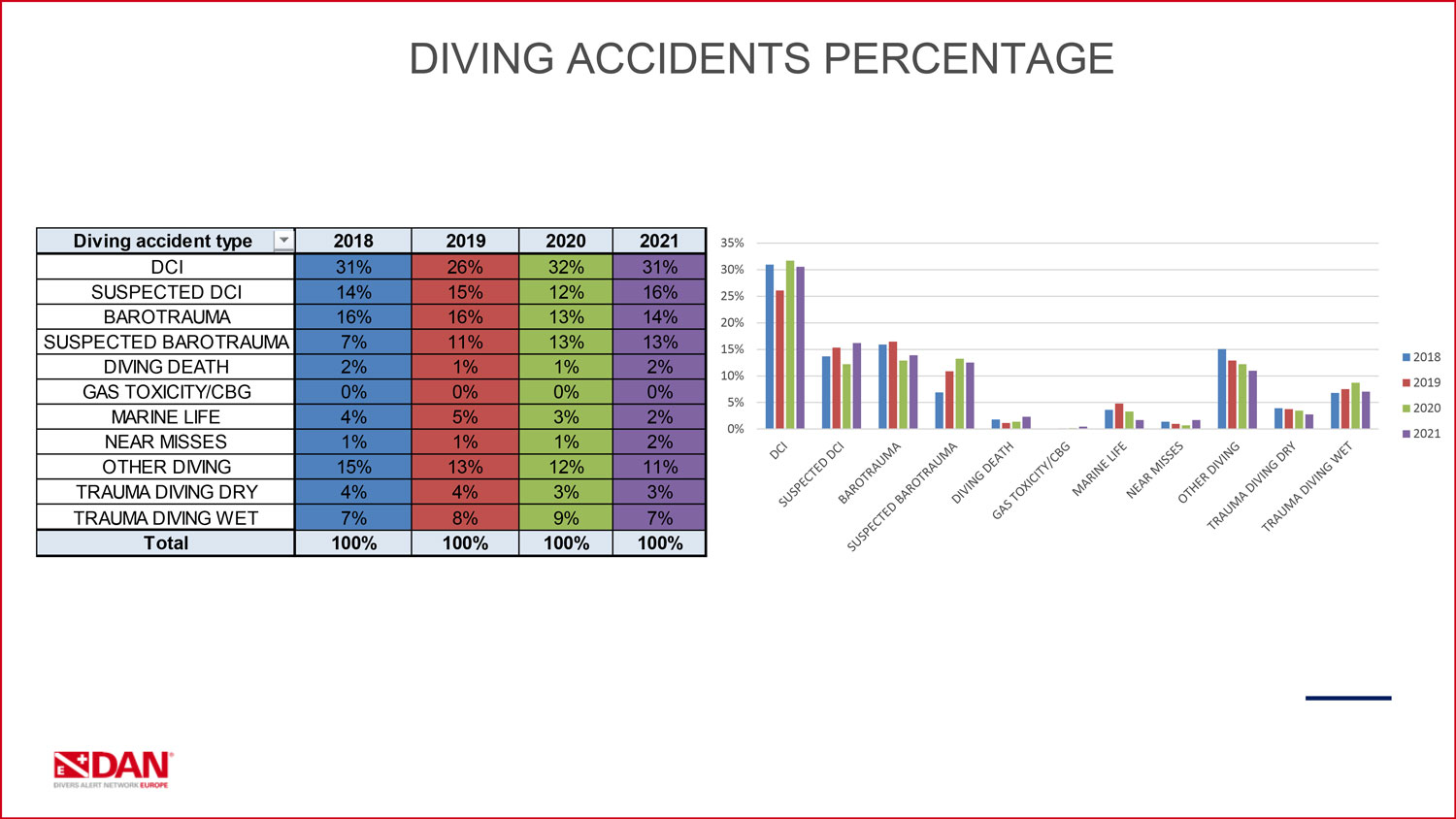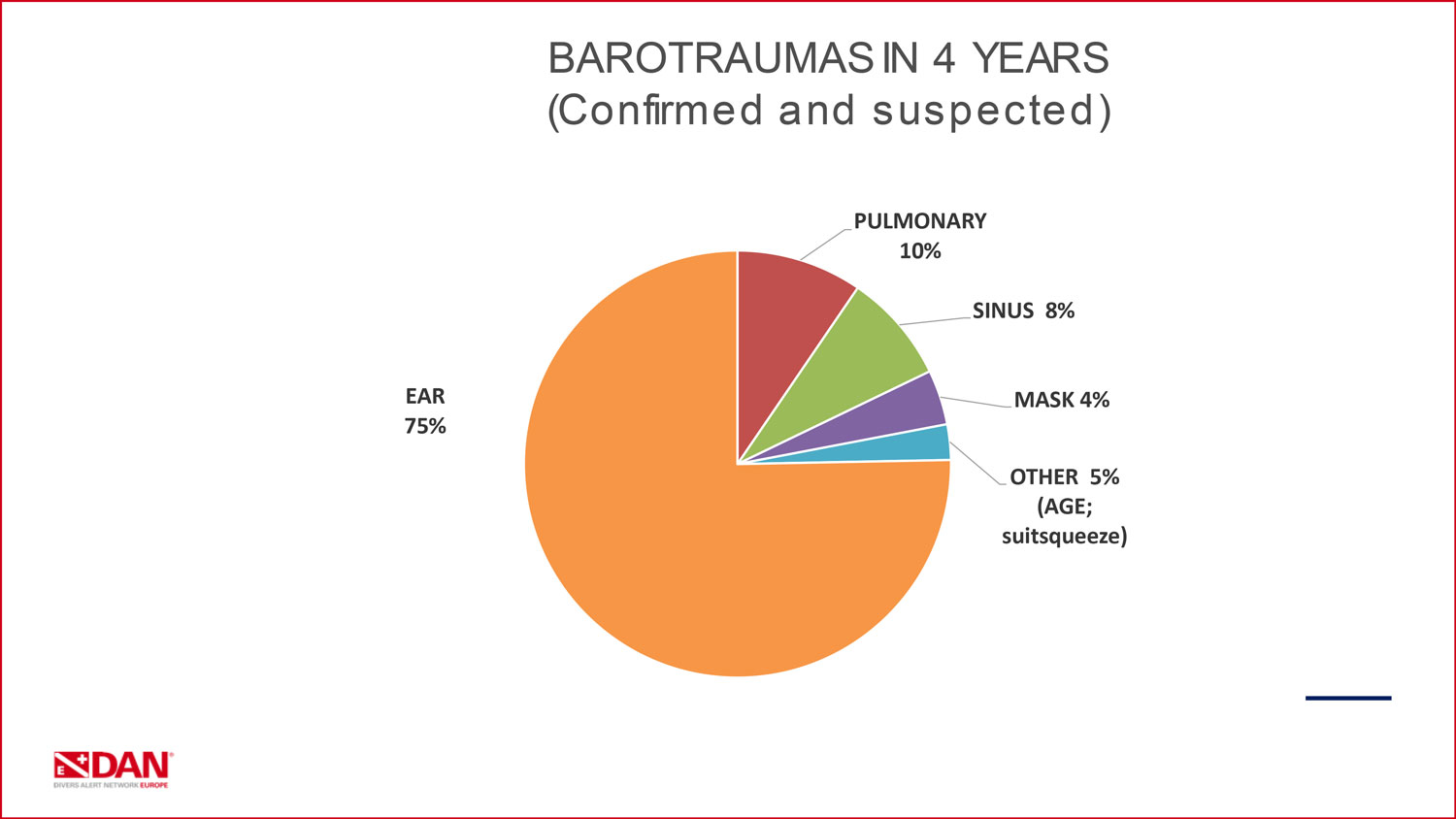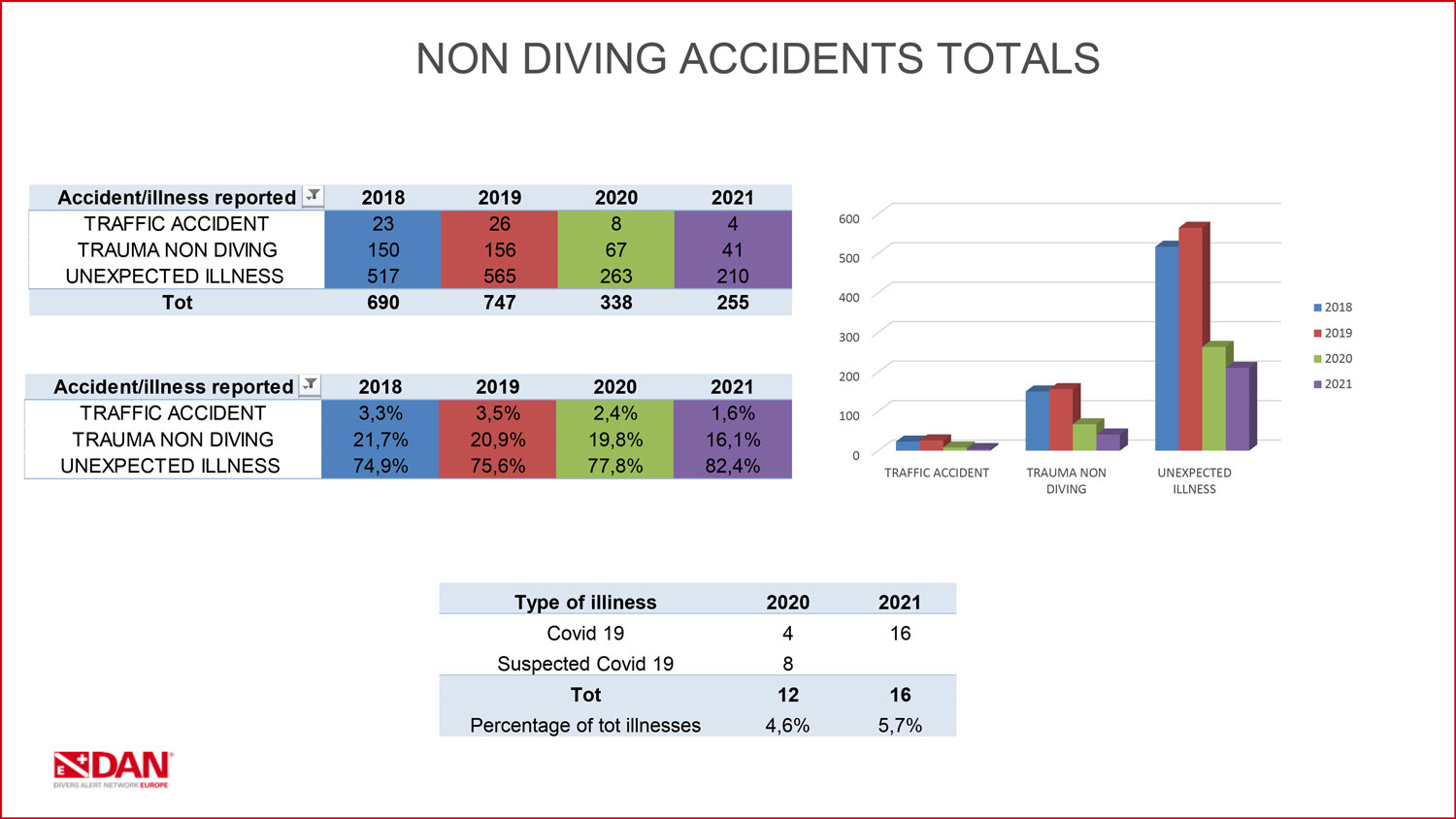Features
DAN Europe’s Emergency Assistance 2018-2021: A Statistical Study
DAN Europe keeps detailed records of the emergencies that it handles through the 24/7 hotline and its network of diving doctors and specialists. We thought it would be interesting to examine and compare the emergency data the two years prior to the COVID-19 pandemic to that of the last two years, and identify any possible trends and determine what they might mean.
Diving VS Non-Diving Accidents
As might be expected, the overall number of reported accidents fell steeply from the two years before the pandemic to 2020 and 2021 when lockdowns and travel restrictions were in place. The number of reported accidents in 2018 and 2019 were 1656 and 1810 respectively as shown in Table 1, or an average of 1733 accidents reported a year. This compares to 931 and 932 in 2020 and 2021 during the pandemic, with an average of 932/year—or a decline of approximately 46%.

Table 1: # of accidents per year by type. Please note that some incident numbers, for example the number of suspected DCI or barotrauma cases are sometimes “recategorized” after a report is issued based on further medical review, resulting in slight changes to the numbers.
Figure 1 Shows the number of assistance cases registered by month over the four year period. Note the precipitous fall in reported accidents in the spring of 2020 as the pandemic grew and lock downs were put in place. The number of accidents increased in the summer diving season similar to pre-pandemic years, only to decline again in the fall, in part due to normal seasonality along with continued lock downs and travel restrictions as the next wave of the pandemic hit.

Figure 1: Assistance cases registered per month
Interestingly, as shown in Figure 2 below the percentage of diving vs non-diving cases during the pandemic compared to the two years prior increased: diving incidents represented 67% of the total emergencies reported during the pandemic compared to 58% in the years prior. This is likely explained by the fact that divers were primarily diving locally during the pandemic and spending less time traveling to far away dive destinations, and hence incurring fewer non-diving emergencies.

Figure 2: Percentage of Assistance Cases Opened
Types of Diving Accidents
Table 2 shows diving accidents by type over the four year period. Similar to total reported accidents, the number of diving accidents fell dramatically during the last two years of the pandemic compared to the two years before. In addition, we see that the number of accidents increased from 2020 to 2021, presumably as more members were able to return to diving.
Note that decompression illness (DCI) and suspected DCI represented the majority of accidents in all four years, followed by barotrauma and suspected barotrauma. In fact, the types of accidents by percentage seem somewhat consistent year to year. The bar chart in Figure 3 shows the percentage of cases by type over the four year period.

Fig 3: Dive Accident Type By %
Diving a bit deeper into the data, Figure 4 shows the Ear barotrauma is the predominant injury followed by pulmonary and sinus squeezes, which are common in freediving. Similarly, Table 4 shows the breakdown of non-diving accidents as a percentage of the total. Note that unexpected illness was the primary cause of non-diving accidents over the four year period.

Figure 4

Table 4
Finally, Figure 5, shows the percentage breakdown of reported accidents by country. Presumably, as mentioned above, travel access and lockdown impacted the country totals. Note for example, Indonesia represented about 12% of the reported accidents in 2018/2019, but fell to 9.2% in 2020, and 4.1% in 2021, likely reflecting travel restrictions. Rest of World (ROW), i.e., DAN Europe countries not listed by name, consistently accounted for about 28-33% of the total over the four year period.

Figure 5: Countries by %
Uniquely DAN
We hope that you found the above accident information useful. Fortunately, as a member, DAN Europe has your back. It is the only diving organization that offers divers a 24/7 medical hotline that will connect you to diving medical officers who speak your own language and are part of DAN’s extensive international network of 180+ diving physicians. Because it provides insurance through its own insurance subsidiaries, DAN Europe is also able to authorize the best care from a medical perspective, while managing claims efficiently and according to industry laws and regulations.
In addition, a portion of the monies that DAN Europe collects for insurance goes to fund advancements in diving medical research, which serve as an important benchmark for the global scientific and diving communities. Monies are also used to develop and promote safety campaigns, which focus on increasing diving safety and reducing diving accidents. Dive safely!

